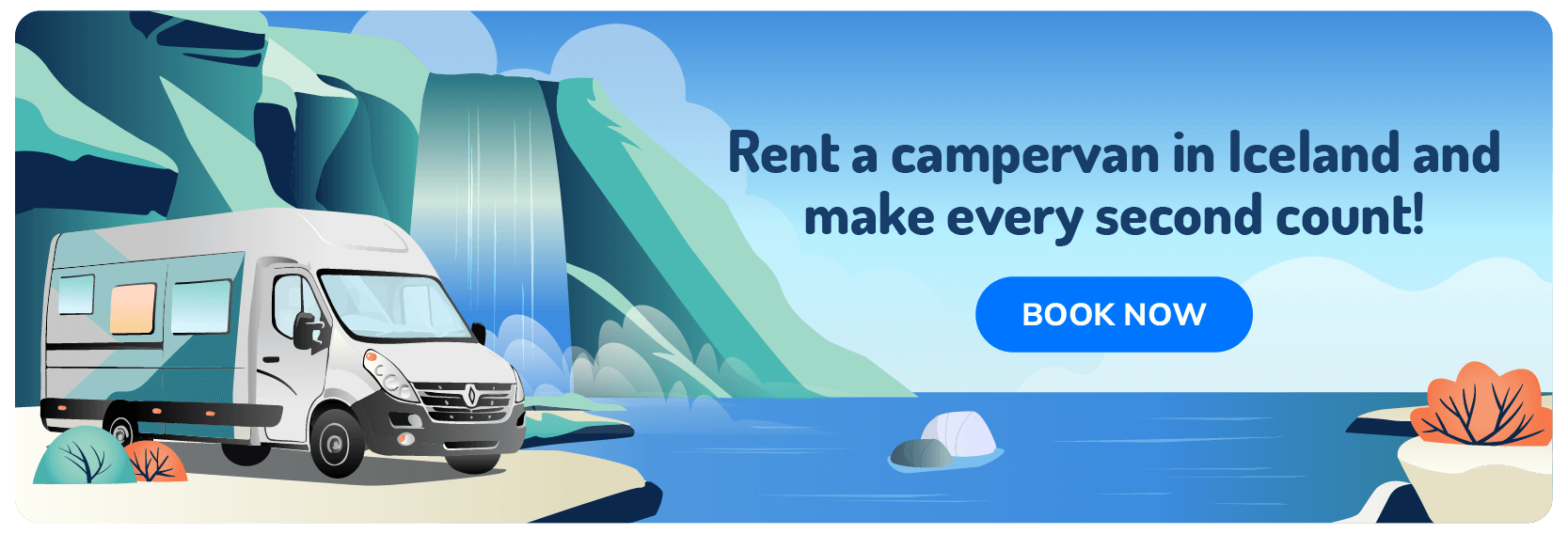Iceland’s camping rules can be a bit confusing and may even seem arbitrary to a traveler who doesn’t know the ins and outs of our geography or complex landscapes (we are the Land of Fire and Ice, after all). So, it’s only natural that we’d get questions such as, “Can you camp in Iceland?” and “Can you camp anywhere in Iceland?”
That’s why this article serves to unravel some of the confusion, clarify a few things, and set out our most important rules in an easy-to-refer-to breakdown. So, if you’ve been thinking of camping in Iceland or road-tripping around the island in a motorhome – this is the article for you!
Iceland’s Camping Rules: What to Do & What Not to Do When Camping in Iceland
The following is a breakdown of what you should and shouldn’t do when going camping in Iceland:
For Campers and Motorhomes
The increase in tourism in Iceland and the growing popularity surrounding vanlife was starting to have serious effects on the country and its ecosystems. So, a law passed in 2015 makes it illegal to park your campervan for camping purposes anywhere other than a designated camping spot.
While the above-mentioned is true, you will find many parked, seemingly out in the wild. The reason for this is that it’s perfectly legal to ask a landowner for permission to camp on their land. Since homes can be pretty remote and our farms pretty big, it may appear like people are just randomly parked or camping somewhere.
For Tents
Tents have somehow managed to slip through the cracks of the 2015 law but are still subject to the camping rules under the Nature Conservation Act. Therefore, you are allowed to set up your tent on public or private land whenever ALL of the following applies:
- There is no campsite nearby.
- There is no farm or other type of residence (where you can ask for permission to stay over) nearby.
- There are no signs prohibiting camping.
- You’ll only be staying for one night.
- You won’t be pitching more than 3 tents for the night.
For Both Motorhomes and Tents
You are not allowed to park/camp in any of our national parks (which are also massive and whose borders are also not always clearly defined) unless it’s in one of the park's official campgrounds. Most of our parks have a Visitor Center where you can ask for more information or assistance in this regard.
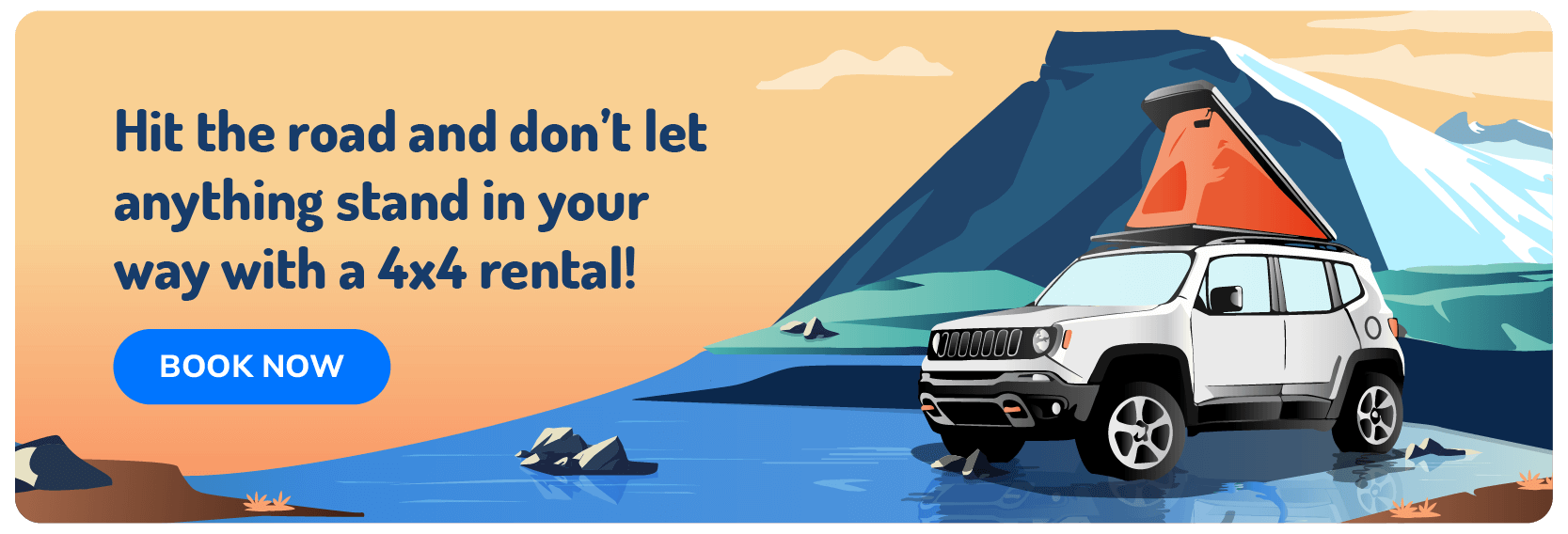
How Iceland’s Camping Rules Have Benefited the Environment
Since implementing stricter camping rules in Iceland, we’ve already seen the following:
- Less damage or destruction to sensitive vegetation.
- The wildlife has been disturbed less since there’s less traffic invading their habitats.
- Although soil erosion still occurs where camping occurs, it’s no restricted/limited to designated sites and no longer such a widespread problem.
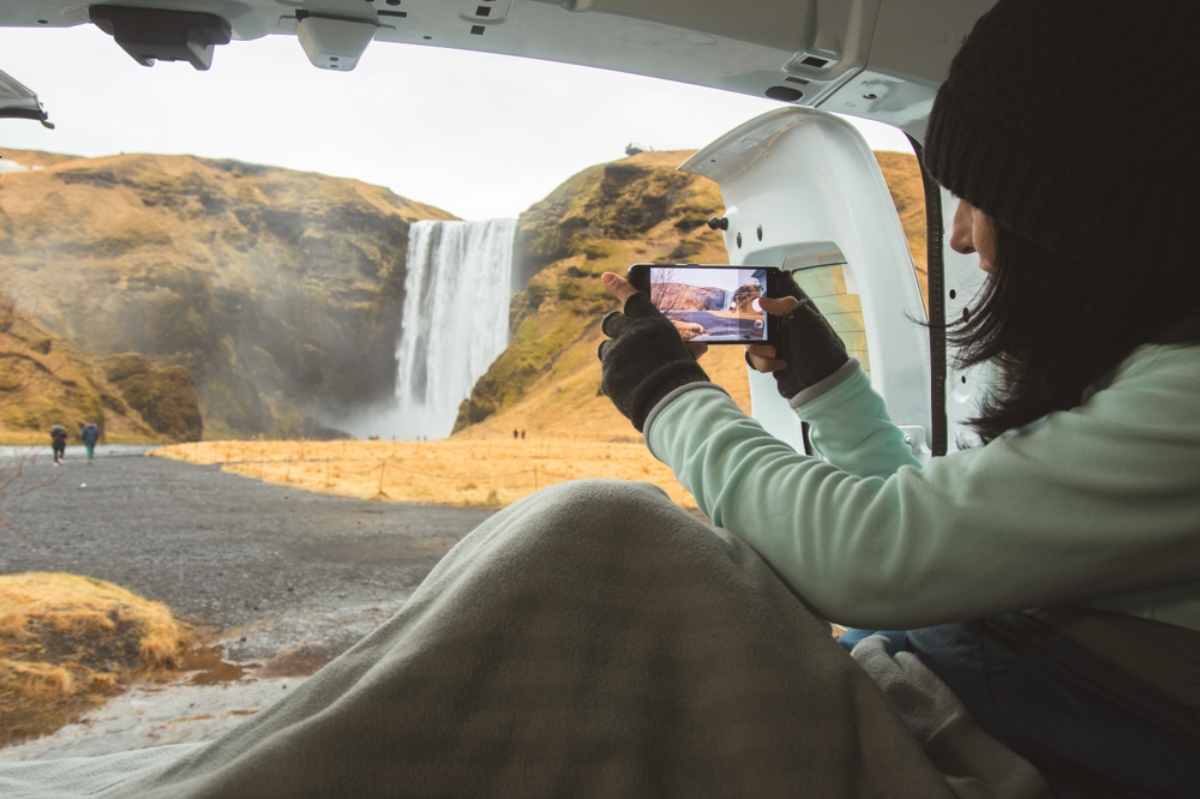
A Few Helpful Tips for Camping in Iceland
If this will be your first time camping in Iceland, you may find the following information quite useful:
- If you’re traveling with your family, or you’re just on a tight budget, the Camping Card is a great way to save money. This card can be purchased for only €179 and will give a family of 2 adults and up to 4 children access to various campsites around the country for a stay of up to 29 days (as long as they keep to one stand).
- In Iceland, we often don’t have any borders defined by walls, fences, etc., and privately owned land can be massive, so double-check that you are not pitching your tent on a piece of land where you need permission. The last thing you want on your holiday in Iceland is to pick up a scrap with a local.
- Do proper research on an area or ask the locals before parking your motorhome or pitching your tent just anywhere. Locals are extremely helpful if they see you want to make sure you do the right thing.
- Although many of our campsites are open all throughout the year, we strongly recommend that you plan your camping trip for the warmer months of the year (April to September), especially if you’re planning on exploring the north (where it gets much colder, and weather conditions are much harsher). The colder months can get pretty uncomfortable, and you might be faced with the sudden closure of roads or other attractions.
- Always stay one step ahead of the weather and road conditions while traveling and keep a close eye on the Verdur and Umferdin websites.
- Technology can fail us and signals can get lost, so don’t just rely on your GPS or phone to guide you. Download a few offline maps or ensure you have a few hard copies with you, and get a map of the campsite or park at reception or the Visitor’s Center. This way, you’ll always have a backup.
- Always ensure that you have enough food and water, especially in the more remote parts of the island. We’re not advising you to go completely overboard and look like you’re prepping for the apocalypse, but just ensure that you have a couple of emergency rations if anything should happen and you wind up “stuck” somewhere on the road or snowed in where there are no shops nearby.
- Icelanders are real sticklers when it comes to the rules - and it’s not just camping rules. You need to adhere to our speed limits (which may be different from what you’re used to). So, keep an eye out for those speed road signs!
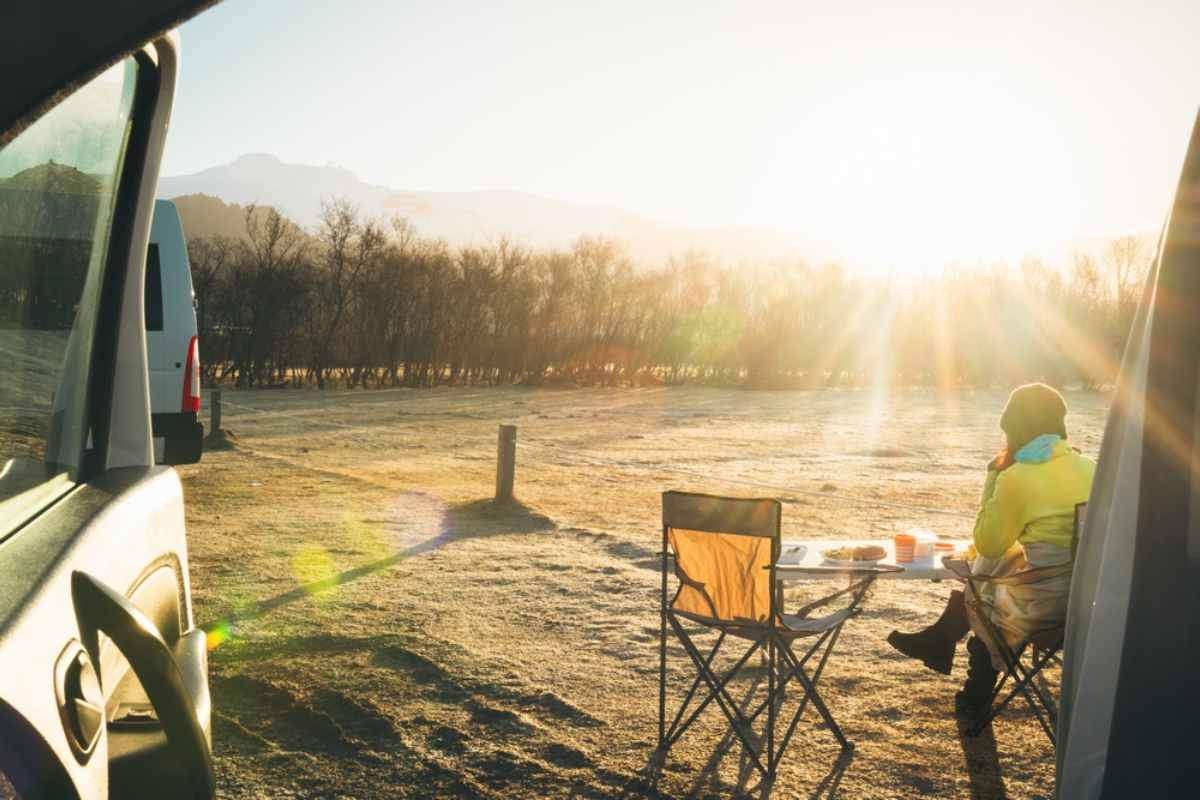
A Few Packing Essentials When Going Camping in Iceland
We’re not going to tell you which pair of pants to pack, but whether you’re going camping in a campervan or tent, the following items are essential and will be your responsibility:
- Enough clothes so you can wear layers, from thermal undies and shirts, to sweaters and waterproof jackets.
- Biodegradable soap and cleaning supplies. Chemical cleaning agents are some of the most destructive when it comes to our environment, so do your part and buy the biodegradable options. You’ll find plenty at our local stores.
- A flashlight or headlamp. We’ve often found the latter to be a better option when camping since it leaves both hands free.
- Any essential electronics and whatever will keep them going if you don’t have electricity. Things like solar chargers, powerbanks, etc. can come in very handy.
- A first aid kit.
- A “beach” kit. There are certain items that are always left by the wayside when traveling to Iceland because they are considered beach holiday items. This is a terrible mistake since you’ll need them all:
- Swimwear - You’ll be using them a lot when it comes to our natural hot springs and geothermal pools, and on good weather days, you might even have a swim in one of our various swimming pools across the country.
- Sunglasses and Sunscreen - These sun “blockers” might seem non-sensical in a place called Iceland, but, trust us, you can still get a nasty burn even when it’s cold or overcast and the glare from the light reflecting off ice, snow, and water will have you permanently squinting without any protection.

Camping in Iceland’s National Parks
While there are some rules that differ between our national parks. So, once again, it’s your responsibility to check signs and websites or ask at the Visitor Centers, to ensure you remain on the right side of the law. That being said, the common denominator among all national parks is that absolutely no camping is allowed in places that are not designated parking spots, unless you have received explicit permission from a ranger. Any camping inside a national park will also cost you a fee.
Some of the Best Campsites in National Parks in Iceland
The following campsites come highly recommended if you’re looking to stay over in one of our national parks:
Vatnajokull National Park
Thingvellir National Park
Snaefellsjokull National Park
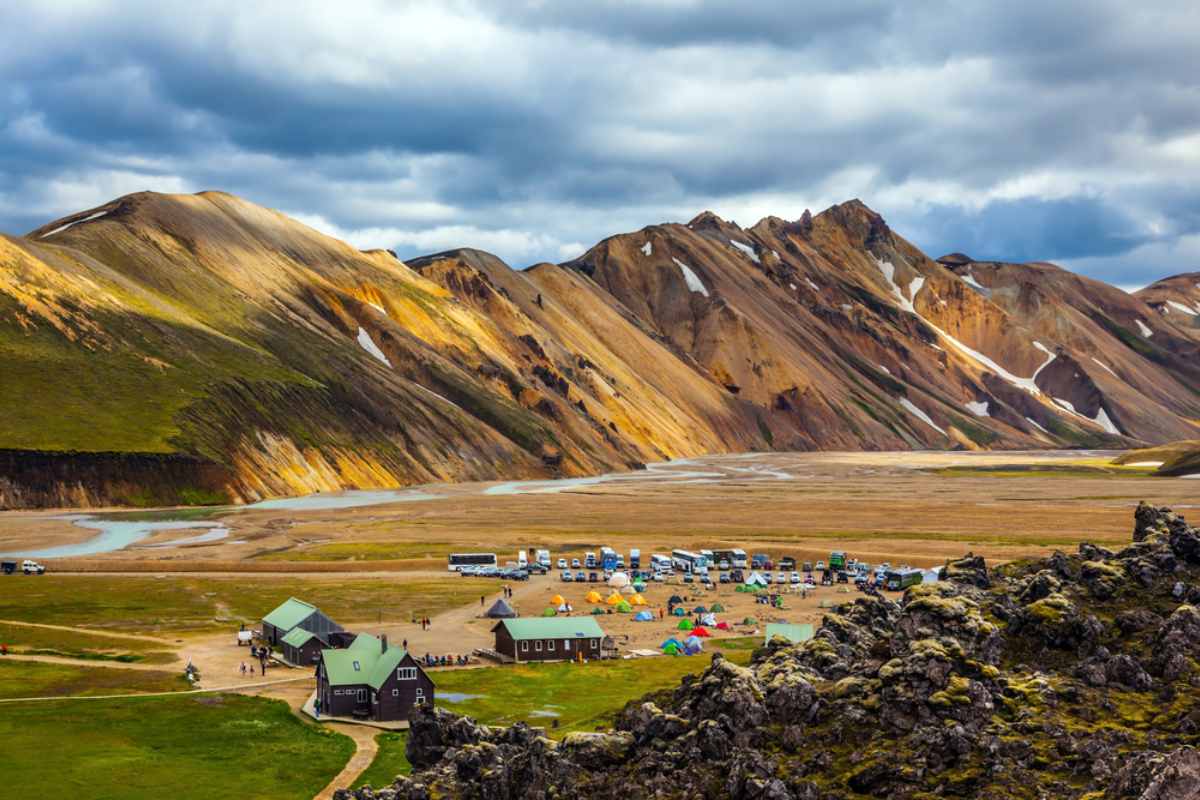
FAQs About Camping in Iceland
Below, you will find the answers to some of the questions we often receive about camping in Iceland:
Can You Camp in Iceland?
Yes, you can camp in Iceland, but most will recommend that you stick to designated campgrounds rather than attempt wild camping.
Can You Camp Anywhere in Iceland?
No, there are certain laws that restrict where you can park a motorhome or pitch a tent.
Is Wild Camping Allowed with a Tent?
Wild camping is allowed with a tent when there are no campsites, farm, or other sort of residence nearby, you’ll be staying just one night, there are no signs prohibiting camping and no more than 3 tents will be pitched.
What Types of Facilities Can One Expect at Campgrounds in Iceland?
The facilities and amenities available at a campground will depend on the campground in question. However, generally, you can expect electricity supply, ablution facilities, and Wi-Fi apart from a few extras such as restaurants, shops, swimming pools, playgrounds, and game/community rooms.
Follow Iceland’s Camping Rules and Stay Out of Trouble
Icelanders are real sticklers when it comes to rules, so it’s best to stay on the right side of the law if you don’t want a triggered Icelander in your face or such a hefty fine that you may need to remortgage your house back home. If you’re planning on renting a campervan in Iceland, your rental company will also advise you on all the rules and regulations, so you can have a stress-free adventure here on the island. So, start, planning your camper adventure in Iceland and follow the rules we mentioned for a safe and unforgettable trip!

